Back to Edinburgh Index
Eaglais nam Manach Liath
Greyfriars
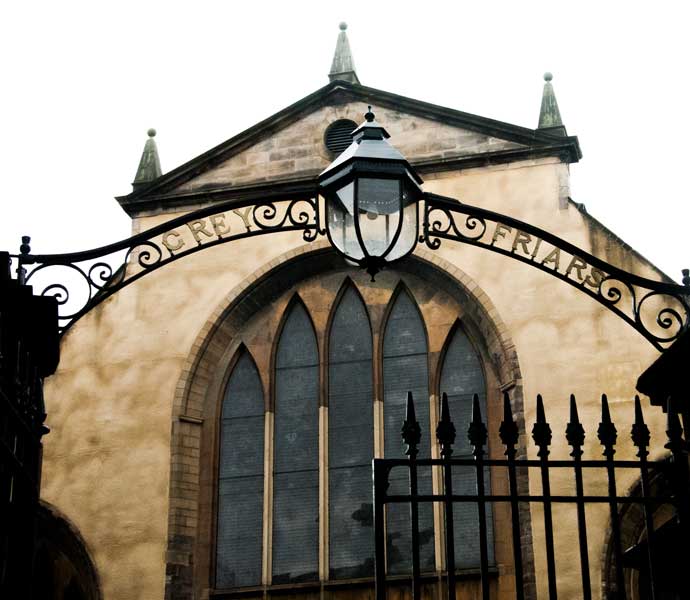
My first encounter with Greyfriars was as an abortive shortcut back to the car. The far gate turned out to be closed and I had to retrace my steps. However, I saw enough along the way to spark my interest and was very open to the suggestion that I return another day for a specific visit.
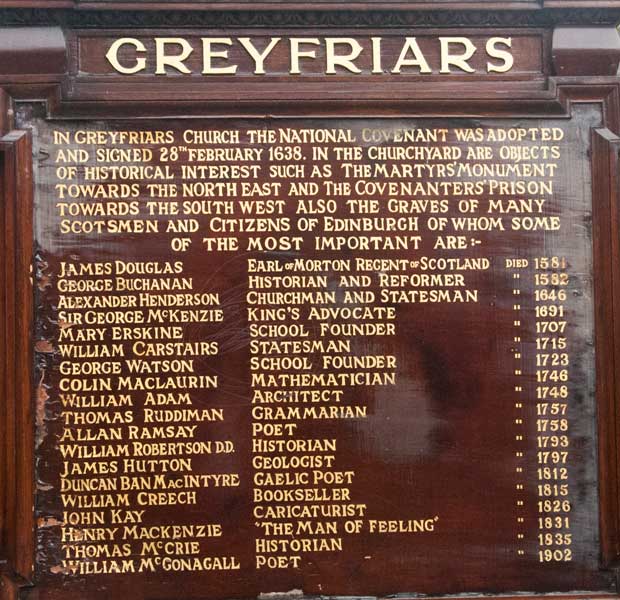
Greyfriars was pivotal in Presbyterianism eventually becoming the established church in Scotland. As you can see on the noticeboard, the Covenant was signed here. This bound the signatories to defend the true religion against all comers, including the Catholic and Anglican churches. Thousands of Covenanters suffered in this cause.
I didn't originally register any of the names on the notice board but I am now familiar with Sir George McKenzie and Sir George Buchanan, both of whom are mentioned later, and with the reputedly worst poet in the English language,
William McGonagall, about whom the least said the better.
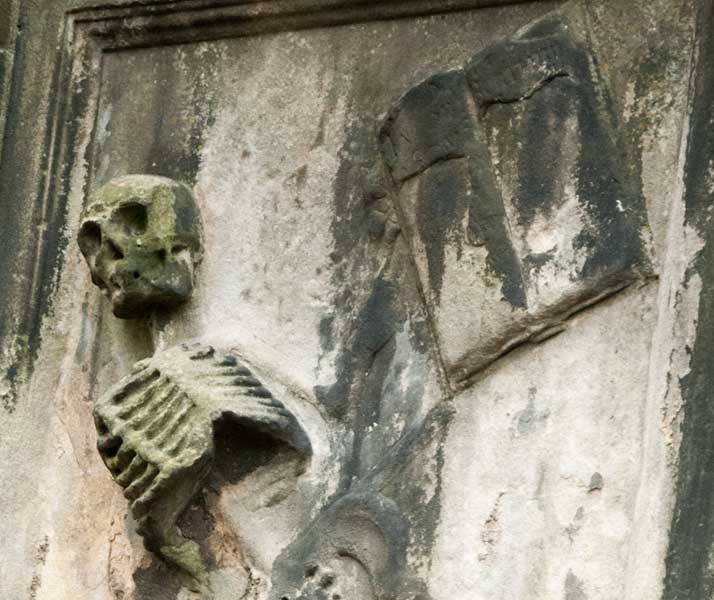
This was one of the first things that caught my eye on the wall of the church as I approached. I think it suggests that one should never fall asleep reading a book.
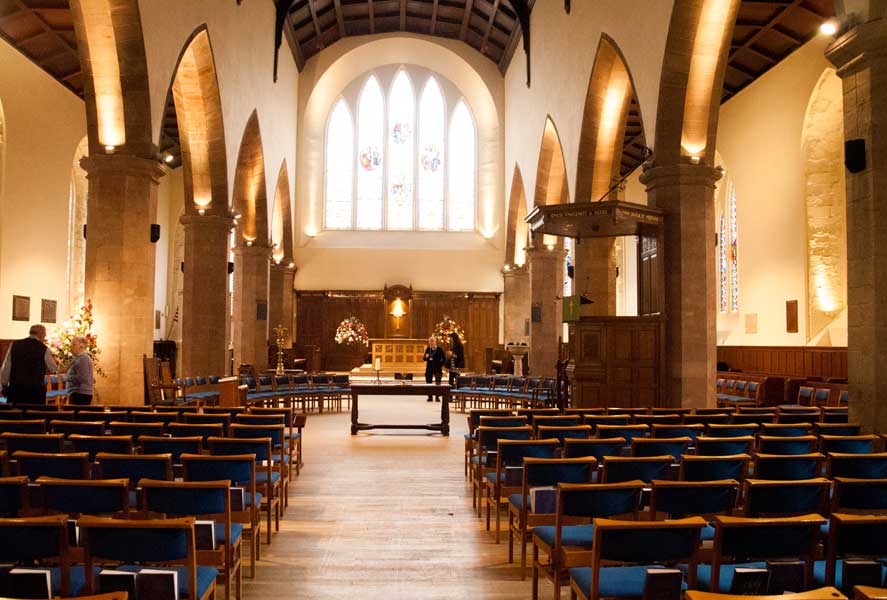
The church is very impressive inside. The first thing I noticed was the unusual arrangement of the seating. Not being familiar with the Presbyterian liturgy I can do no more that point it out.
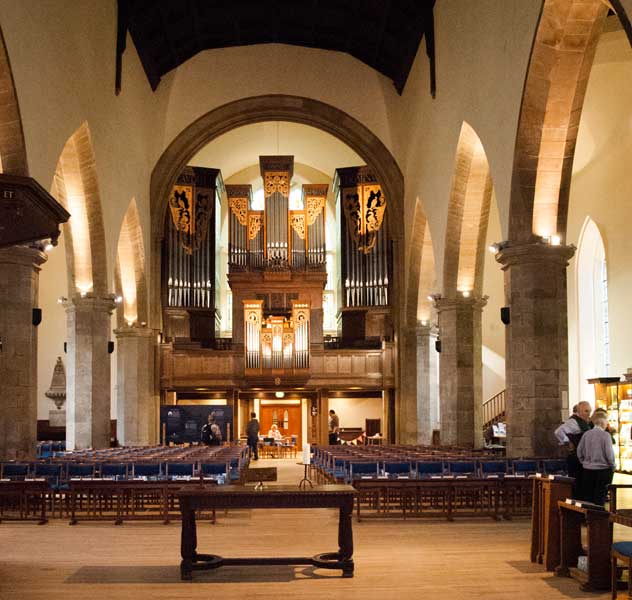
Looking back from the altar reveals what appears to be a magnificent organ. Unfortunately I was not around to hear it played.
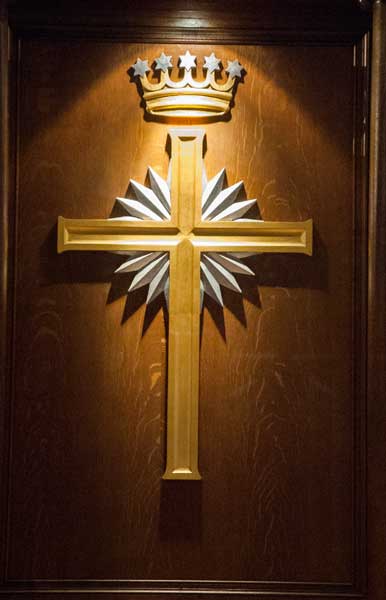
This is the impressively simple wall piece behind the altar. There is a certain low key serenity about this church. Maybe it's the contrast with my ultra high church (Roman Catholic) background.
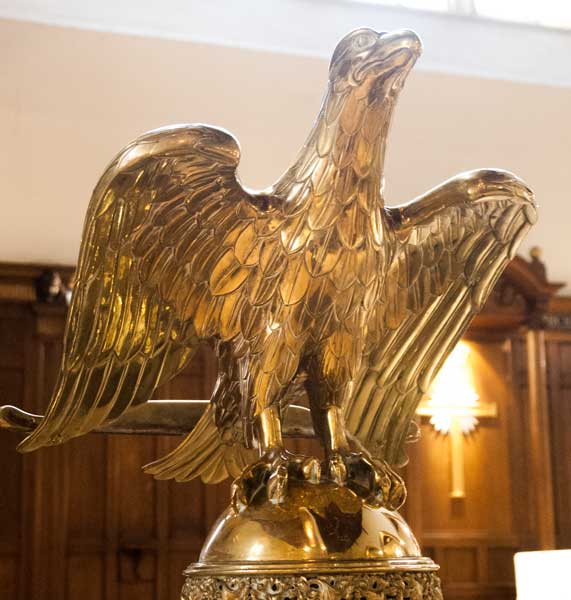
I love these Protestant lecterns. They have both a presence and a challenge about them. Ideal visuals to accompany the message no matter what that may be.
I know I said Protestant and I know there is such a lectern in St. Mary's Roman Catholic church on Haddington Road in Dublin. But that one is a most unusual church. It even has a memorial to parishioners who fell in WWI, most unusual for a Catholic church.
So as far as I'm concerned, these lecterns are Protestant and they represent direct contact between the laity and the Holy Ghost.
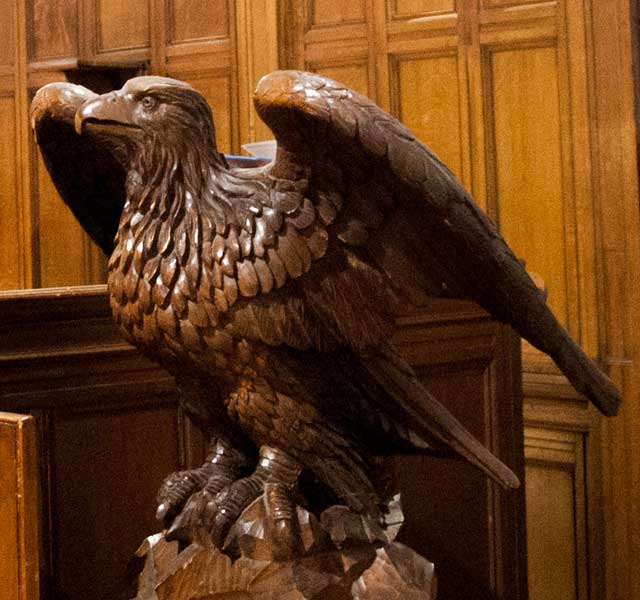
And here's an equally impressive wooden one.
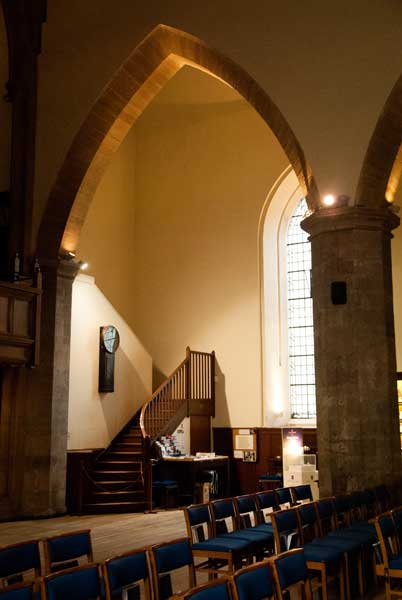
I had thought I might wander upstairs to check out the gallery and that magnificent organ but there is a sneaky little rope across the bottom of the stairs. So that put paid to that idea.
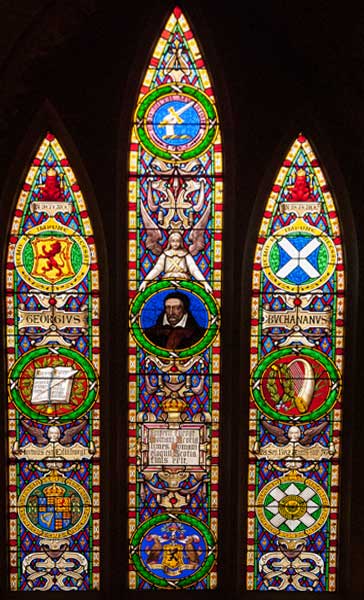
This magnificent window is a memorial to
George Buchanan (1506-1582). I don't think the Scottish Presbyterians create saints but if they did he would be one of them.
A highly influential man in his day, he had the distinction of being tried and punished by the Inquisition. Although he remained a Catholic for much of his life he was bitterly critical of the Catholic clergy.
In later life when he switched allegiance he was made Moderator the Church of Scotland. He was the last lay person to be elected Moderator until Alison Elliot in 2004, the first female Moderator.
He taught that all power came from the people and that the "divine right of Kings" was subject to this constraint. He is buried in Greyfriars.
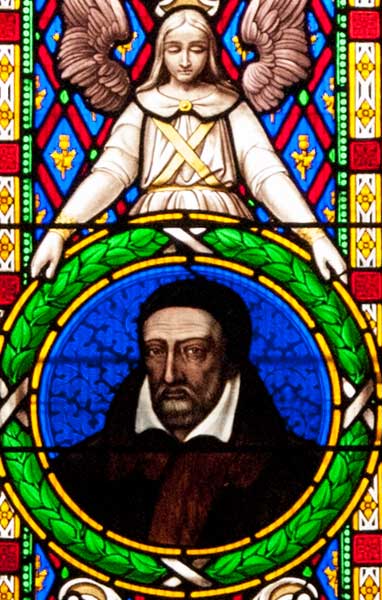
This will give you an idea of the quality and detail of this window. That's George.
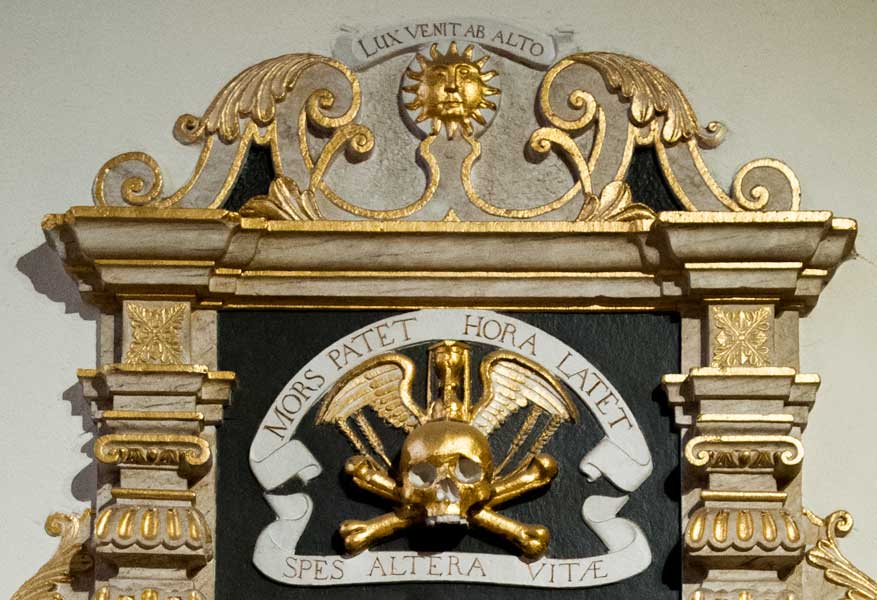
This piece is on the wall of the Lady Yester chapel within the Greyfriars Kirk. It was brought from the
Lady Yester Kirk when that church ceased to function in 1938 due to the falling population in the old town. In common with a number of other Kirks its functions transferred to Greyfriars.
I'm really including it for all the Latin on it. I know Latin was the language of the church down the centuries but I get the impression from various inscriptions around the place, including on tombstones, that its invocation is also an attempt to call on the magical properties of the faith.
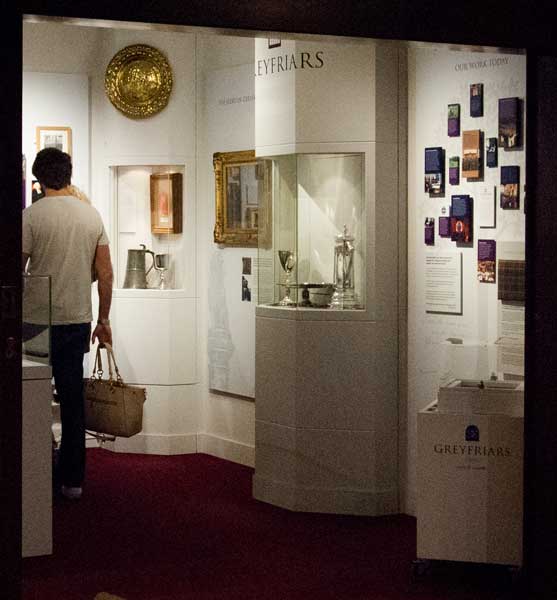
There is a small museum at the bottom of the church but as you are not allowed to take photographs inside it I contented myself with a general shot from the outside and went about exploring other aspects of the site.
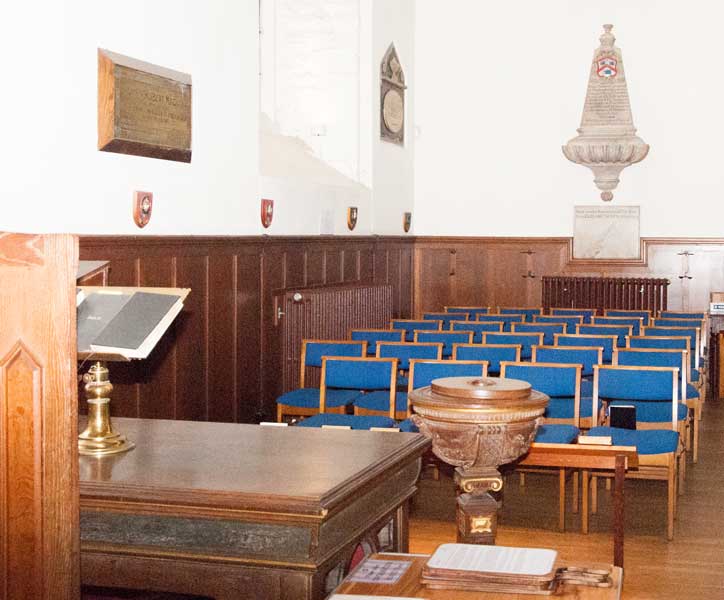
As I mentioned elsewhere, Greyfriars has inherited the responsibility for providing a weekly service in Gàidhlig and the above corner of the church is reserved for this.

I was very lucky to meet a man who offered to take me to see The Covenanters' Prison. This is normally locked except during explicit tours. This area was simply an enclosed field in 1679 when
Sir George Mackenzie imprisoned 1,200 Covenanters there. Some were executed, and hundreds died of maltreatment.
If you are interested in following up this aspect in more detail
Dr. Mark Jardine's post on the prison with its copious links is a good place to start.
Since that time the perimeter has seen the construction of various elaborate memorials to Edinburgh's top tier.

This one is to Sir James McLurg of Vogrie, Dean of the Guild of Edinburgh, who died in 1717. It is unusual in its quantified listing of his legacies to his friends and to various charitable causes.
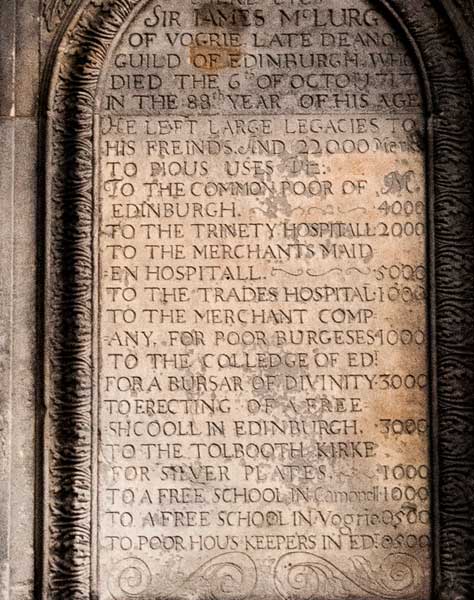
You can check them out yourself. I don't know what the currency denomination was, presumably the pound sterling of its day. Lots of zeros, though, for those days.
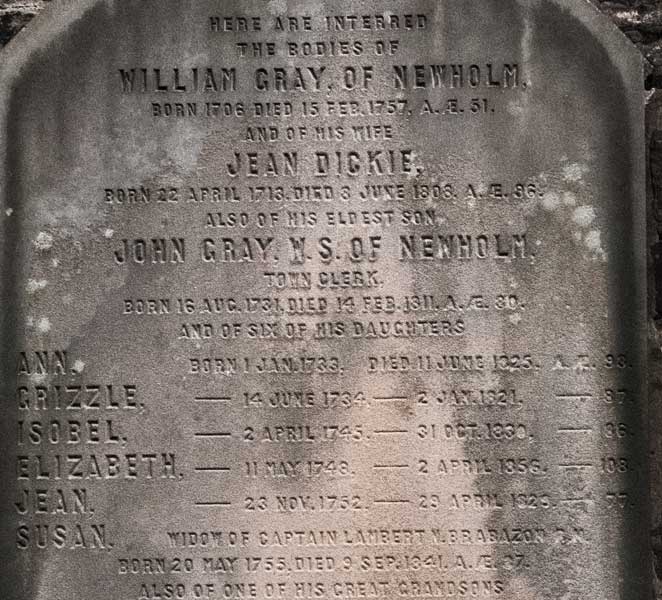
This one is interesting for its listing of six sisters who when they died were between the ages of 77 and 108. Some longevity gene there.
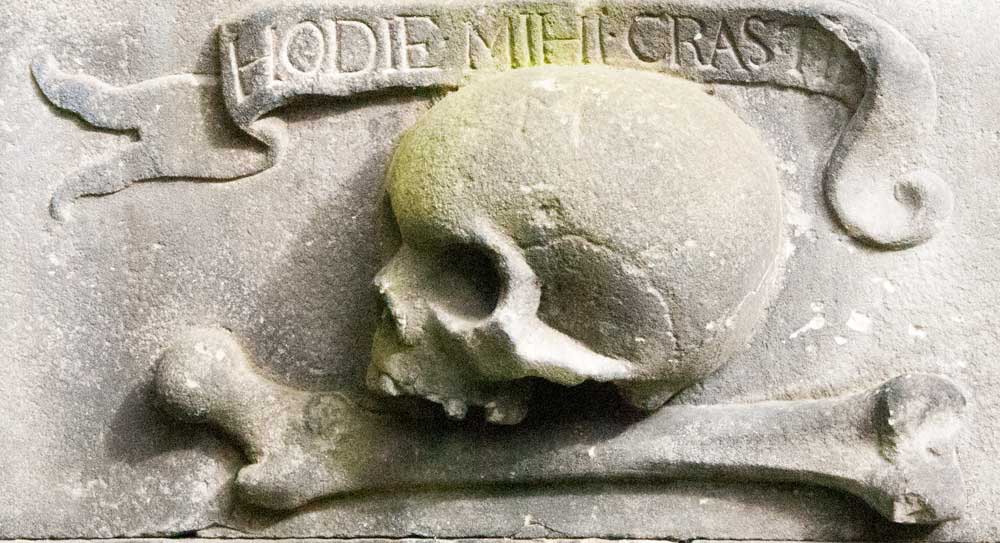
I was fortunate to be able to earn my keep, as it were, by translating this inscription for my guide. Essentially it is saying that The Grim Reaper came for me today and will come for you tomorrow. Standard fare for its day, designed to keep the living on the straight and narrow.
So we'll leave the Covenanters' Prison and take a quick trip around the wider graveyard.
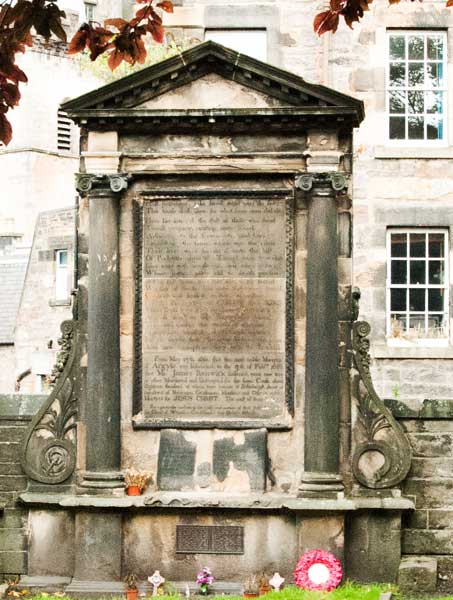
We might as well start with something decent. This is a memorial to the martyred Covenanters. It is a site of pilgrimage for many, including, I am told, Ian Paisley in his day.
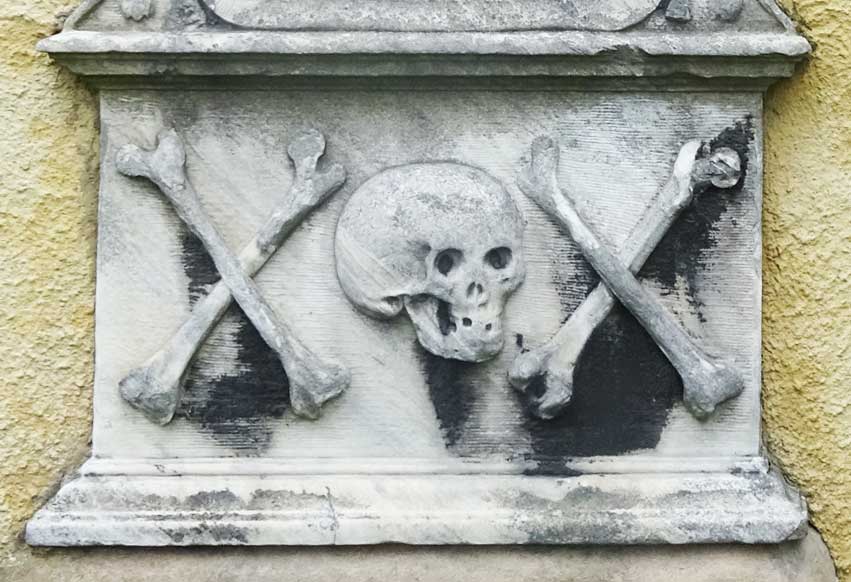
As in the Liberton Kirk graveyard, there is no shortage of skull and cross bones on the tombs and gravestones. I had thought these simply examples of memento mori but my guide assured me that they were all Freemasons. After all, in those days you didn't get anywhere if you were not a Freemason and to merit burial in this graveyard with any sort of a decent memorial you had to have got there.
I've included a few variants below so you get the hang of the thing.
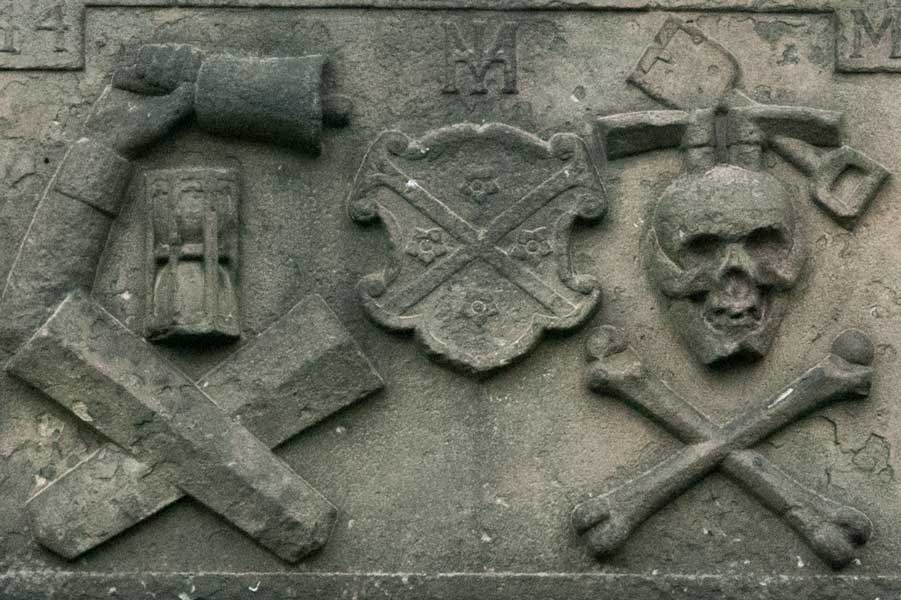
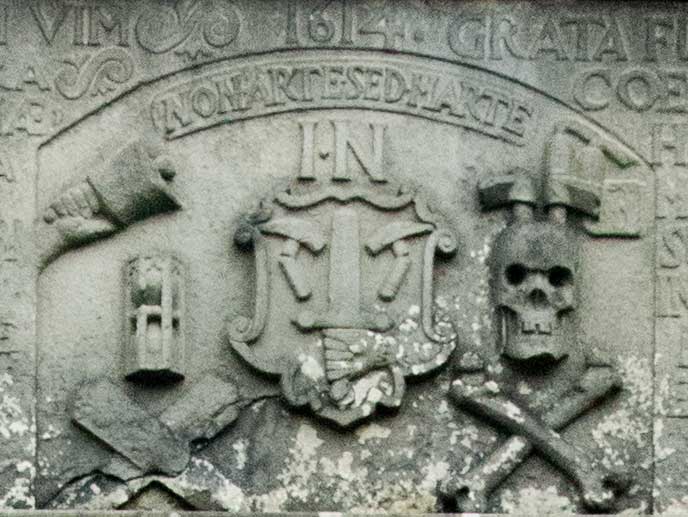
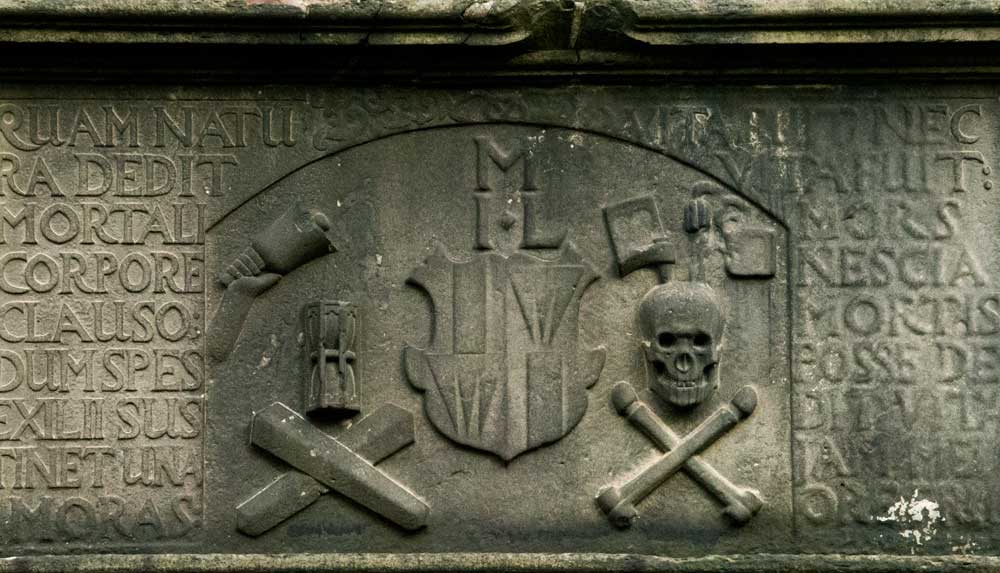
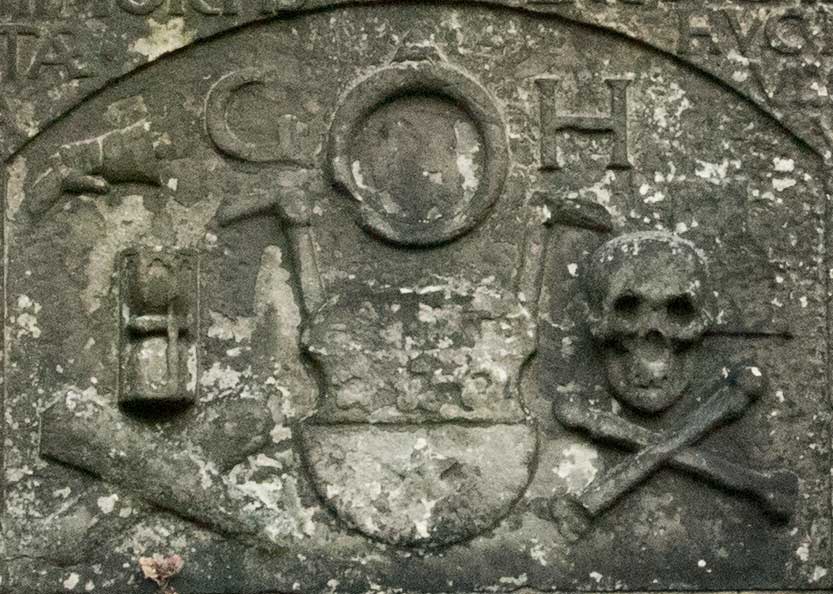

Then there are those whose elaborate monuments are surmounted by what I take to be the family crest. All this individuality in the face of
Death the Leveller can get a bit confusing.
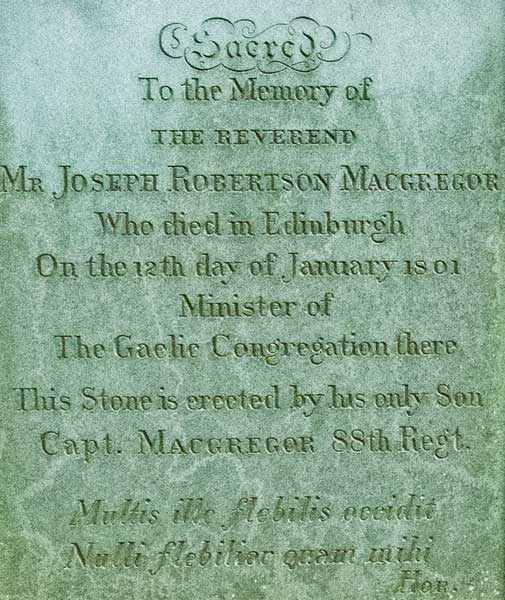
Nice to see a Minister of the Gaelic congregation of Edinburgh remembered for this precise service but it would be even nicer to see a few words of Gàidhlig included in the inscription instead of a ritual acknowledgement by his son using a quote from Horace.
multis ille flebilis occidit nulli flebilior quam mihi
he fell lamented by many , by none more lamented than by me
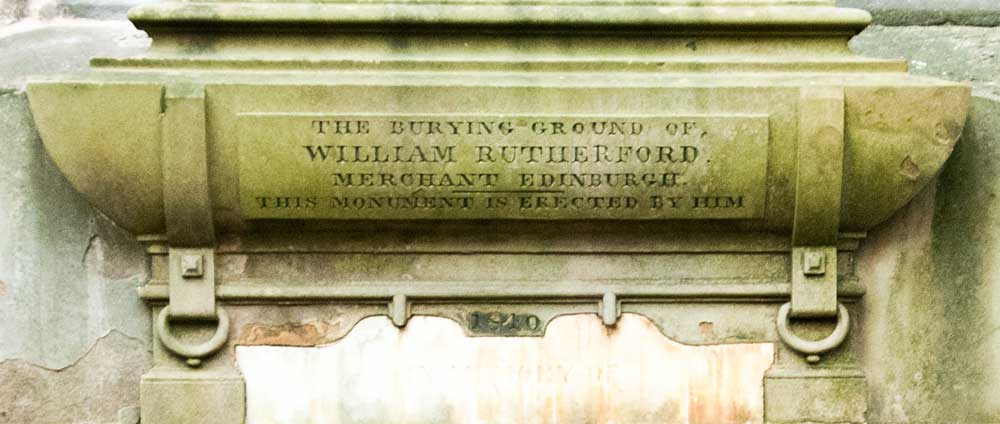
I'm including this piece of a large memorial to remind myself of the importance of the merchant class in this seaport. The inscription suggests that this guy had already made preparations before his day of reckoning.
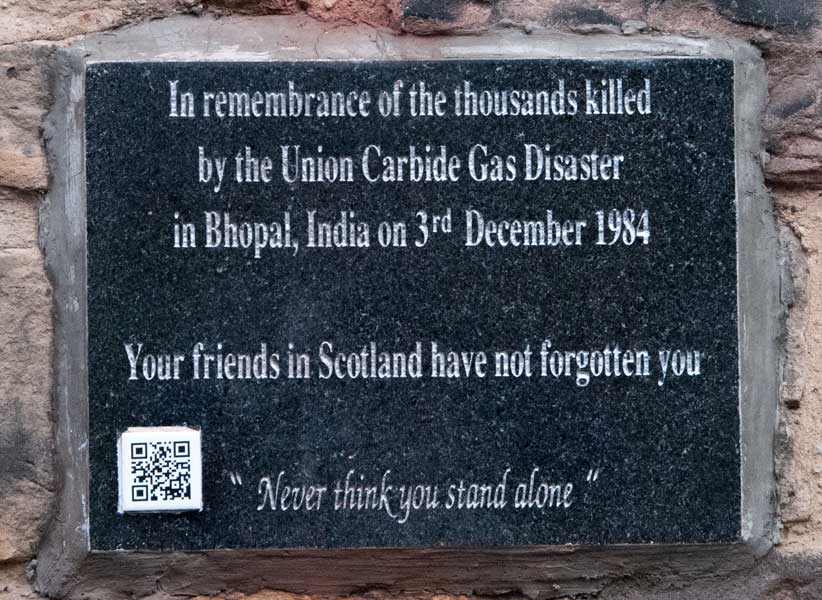
This one pulled me up suddenly as I was almost on my way out the gate.There seems to have been great solidarity between the people of Scotland, and particularly the trade unions, with the victims of the Union Carbide Bhopal disaster. It appears that Indian trade unions had been warning about safety at the plant well before the disaster.
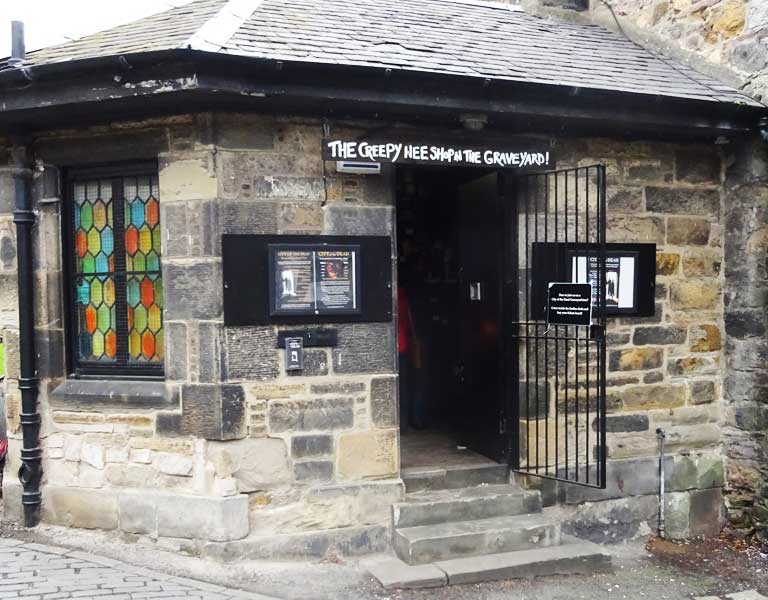
Finally, the ever present bit of tourist exaggeration.There are various dead tours advertised around the town and what's a tour without a load of creepy stories and the odd haunting here and there.
My guide told me that Greyfriars is one of the favourite locations on the itinerary and that some fairly wild claims are made with a straight face. Although he has been with this church for many years he has yet to see one of the emanations included in the tours' cast of ghostly characters.
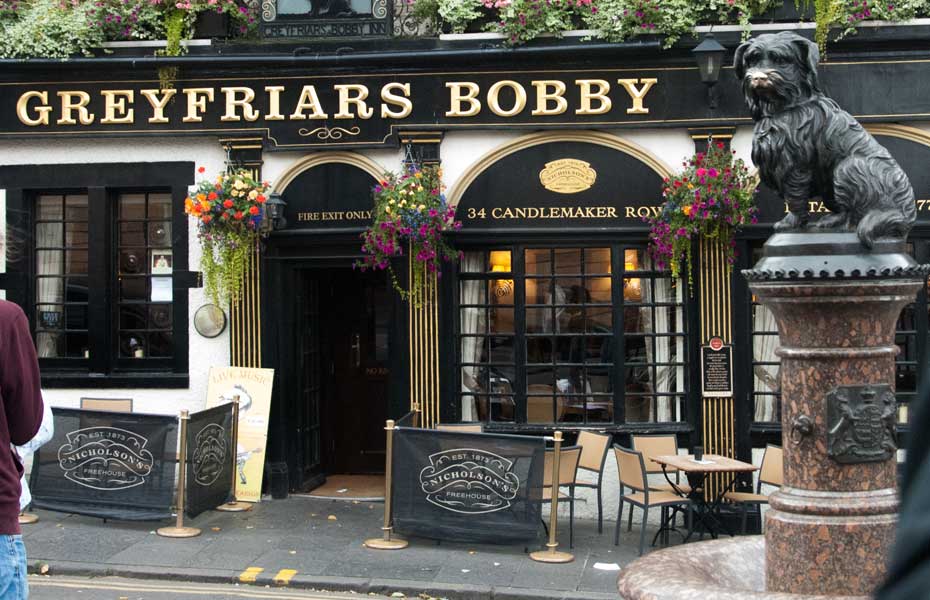
Finally, finally, as we leave Greyfriars behind we come upon Greyfriars Bobby in the street. This is a monument to a dog which is reputed to have spent 14 years guarding the grave of his owner until he died himself on 14 January 1872.
That's the most popular and convenient version of the story. Other versions tell of two different dogs covering the 14 year period, and yet others see this as a story woven from the general occurrence of stray dogs becoming attached to graveyards where they get fed.
I think I'll have to go along with the popular version in the interest of the publican keeping his licence.
Back to Edinburgh Index






























